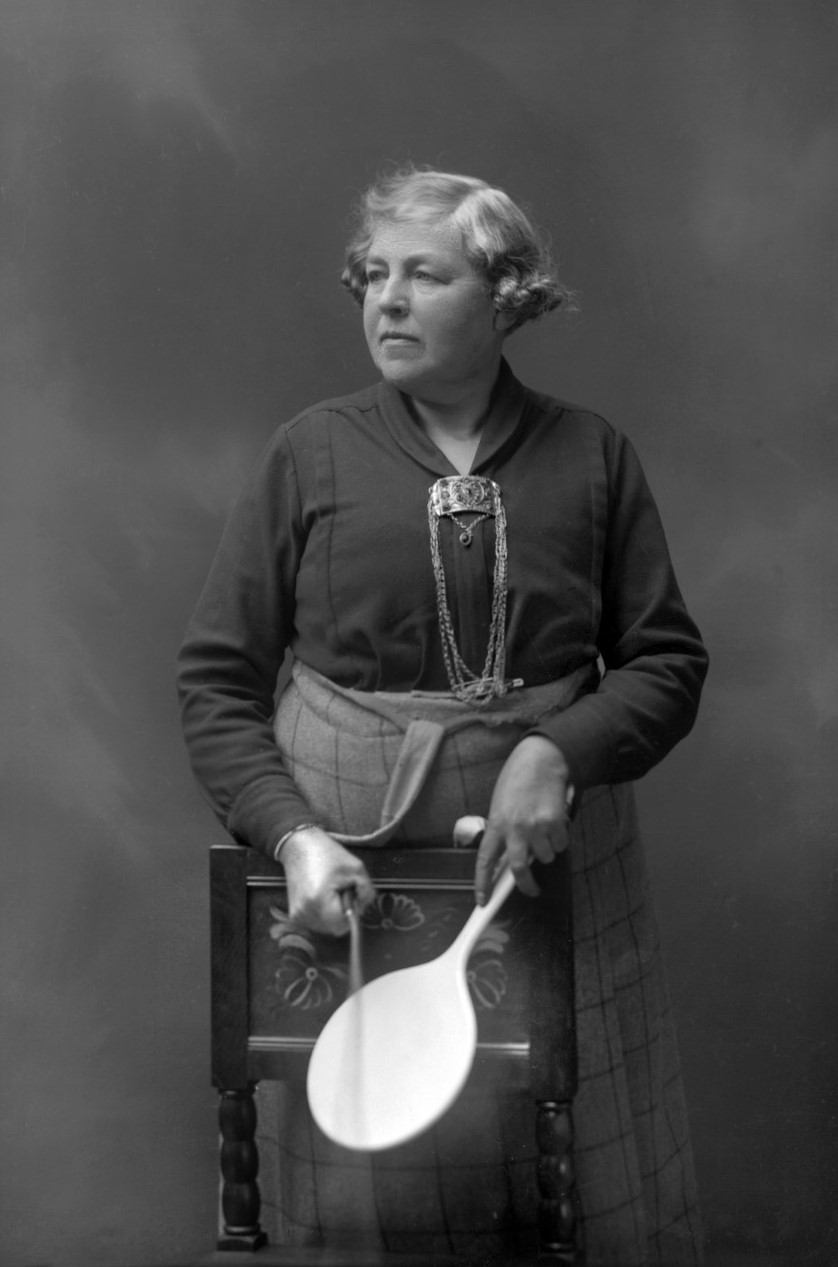Gerda Söderlund was a country photographer who documented people in their local folk costumes, life in the rural areas, work and views from Leksand and the surrounding parishes. With her camera, she also travelled all over Sweden.
Gerda Söderlund was born in Leksand in 1874. She was the daughter of a tradesman, Carl Johan Söderlund from Falun, who arrived in Leksand from Gagnef in 1856. Her mother, Britta Naijström, was the daughter of a tradesman. She arrived in Leksand from Torsång with her family in 1839. Gerda Söderlund was the next youngest of six children, three girls and three boys.
Gerda Söderlund started her career as a photography pupil with August Wahlström in Falun around 1890. After that she travelled to Stockholm and practised for the court photographer Ernest Florman for a few years. In 1895, she opened her own photography atelier in Leksand but after a couple of years she moved into a newly furnished atelier with a skylight. Apart from her atelier in Leksand, Gerda Söderlund opened several branches in neighbouring towns: in Gagnef in 1901, Borlänge in 1903, Insjön in 1904 and Mockfjärd. Gerda Söderlund advertised her enterprise via a glass showcase near Leksand Church and in it she showed examples of her photography arts. In 1915, Gerda Söderlund purchased land at Käringberget in Leksand and there she had a large two-storey timbered house built. In it, she furnished a photography atelier. From 1920 onwards she was registered at that property. Many of those who hiked up to the lookout tower at the summit of Käringberget had themselves photographed by Gerda Söderlund. They were either photographed in her atelier or in the garden, often dressed in the Leksand folk costumes that Gerda Söderlund had in her well-supplied wardrobe. Her sister Signe, who worked as a bank clerk, moved in with Gerda Söderlund and in 1932 her other sister, Hildur, also moved in. She was a widow.
As early as 1899, Gerda Söderlund became a member of the association Svenska Fotografernas Förbund (SFF, now Svenska Fotografers Förbund). When SFF celebrated its 40th jubilee, she was awarded the association’s veteran distinction and its medal in gold and enamel. Gerda Söderlund photographed not only in the Leksand area but also round about in Sweden and on the assignment of the Svenska Turistföreningen and the Kungliga Järnvägsstyrelsen. Many of her photographs were published as postcards. Gerda Söderlund also travelled abroad, to among other places Italy, Egypt, Africa and Asia.
Several of the women photographers around Lake Siljan socialised privately as well as meeting as colleagues. They were Gerda Söderlund with her atelier in Leksand, Berta Hallgren with her ateliers in Mora and Leksand, Märta Berg in Rättvik, Selma Westberg in Mora and Margit Karlsson in Leksand. Being a pupil for an established photographer was a common training, for women preferably with a woman photographer. Berta Hallgren had been a photo pupil for Gerda Söderlund, Selma Westberg for Berta Hallgren and Margit Karlsson also for Berta Hallgren in 1915. Of those five photographers, three were married while Gerda Söderlund and Margit Karlsson remained unmarried, which was not unusual for women photographers. It was also common that women photographers took over other women photographers’ ateliers, or that they handed over their own to other women photographers. Margit Karlsson took over Berta Hallgren’s photo atelier in Leksand in 1925, and she in her turn had taken it over from Gerda Söderlund around 1914.
Part of Gerda Söderlund’s collections of negatives, of which about 1,500 are glass plates, are preserved in the Leksand local history archives in the Leksand kulturhus. In the Dalarna Museum and other photography archives, there are photographs taken by Gerda Söderlund.
Gerda Söderlund died in Leksand in 1949.












